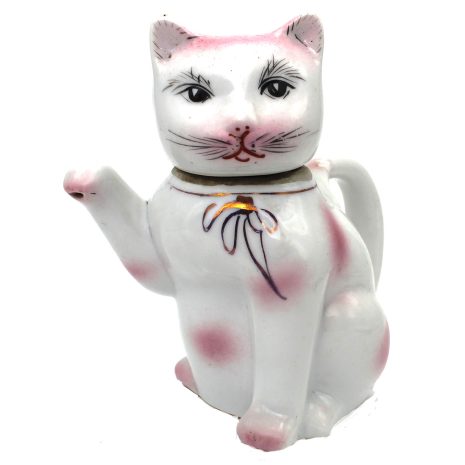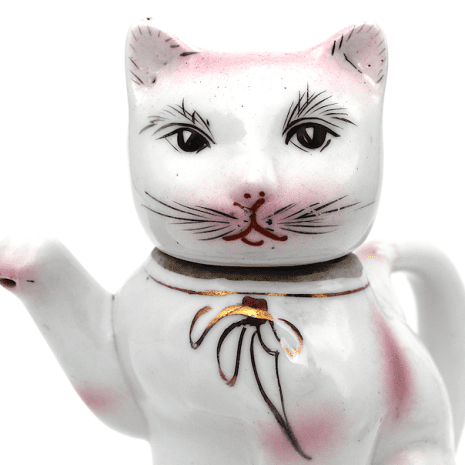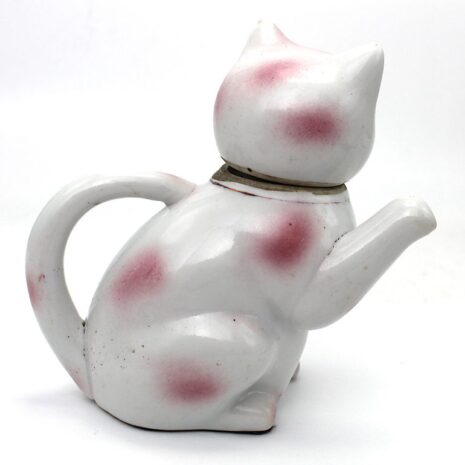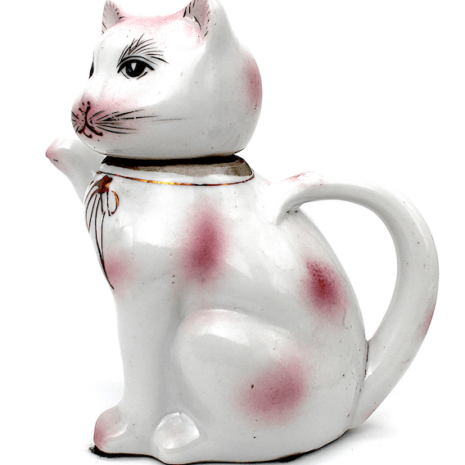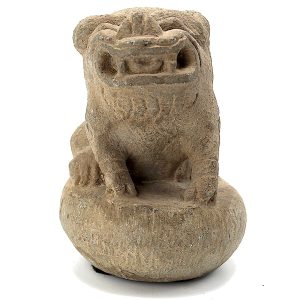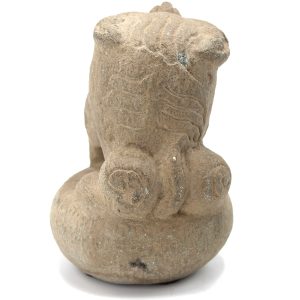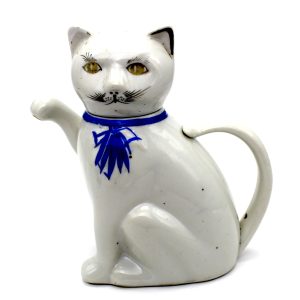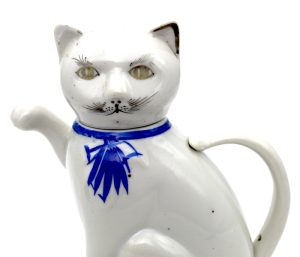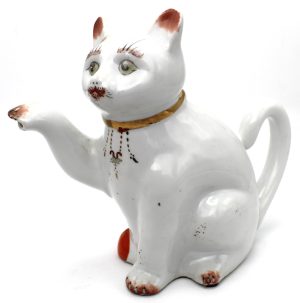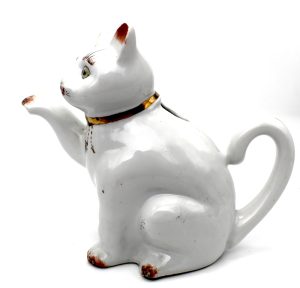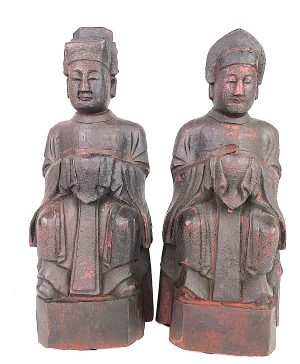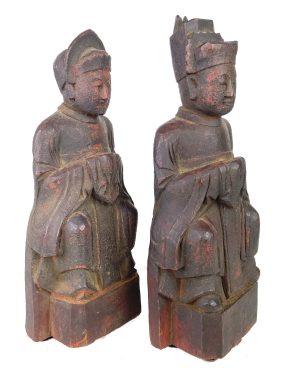Antique/Vintage Porcelain Cat Teapot, Chinese Republic (16944A-WLE) $135
$135.00
H: 5.5″ W: 3 ” D: 3.375 ” | FREE SHIPPING!
This charming white porcelain cat teapot has a removable head, a long sinuous tail handle, and an opening at the end of its paw to serve tea. The hand painted design is whimsical and colorful featuring a thin ribbon-like gold collar and dangling ornamental bow and black accents and pink strokes that define the face, eyes, ears, head and paws.
Description
In China and Japan cats are often portrayed as small-teapots that provide individualized tea servings and better retain heat. White porcelain with a clear glaze was often the preferred pottery form for teaware as it was viewed as more elegant. Since Mao (猫), the word for cat, is a homophone for octogenarian, it is a well-known Chinese longevity symbol (shou 壽). Qing dynasty and Chinese-Republic teapots have a raised paw as a spout, a popular motif of a “beckoning cat” like the famous Japanese Maneki Neko widely used in feng shui, especially among Chinese merchants, as a greeting and welcoming gesture to promote and maintain positive energy (chi) and bring good luck and fortune into their store. These cats have long ribbons (shoudai) around their necks, a homophone symbolizing longevity (shou 壽). They are charming pouring-vessels that enrich any space, especially a kitchen, and their symbolic wishes for a long life and good luck make them appropriate gifts for any occasion, birthdays, housewarmings and weddings. Its condition is excellent with normal dark dot-like firing imperfections and minor scratches from age and its use. There is a blank circle seal in the mold on the bottom, and later vintage versions are stamped with “Made in China” and/or red stamped characters of the maker. As with any antique teaware we advise they be used only for decorative purposes.
Additional information
| Weight | 6 lbs |
|---|---|
| Dimensions | 10 × 10 × 10 in |
| Place of Origin | China |
| Period | Antique/Vintage Chinese Republic |
| Date | 1912-1949 |
| Materials and Technique | Porcelain |
| Dimensions (inches) | Ht: 5.5” W: 5.” D: 3.375” |
| Dimensions (metric) | Ht: 13.79cm W: 12.70cm D: 8.26cm |
| Weight | 9 oz |
| Condition | Excellent, age appropriate signs of wear |
| Item Number | 16944A-WLE |
| Shipping Box Size |

